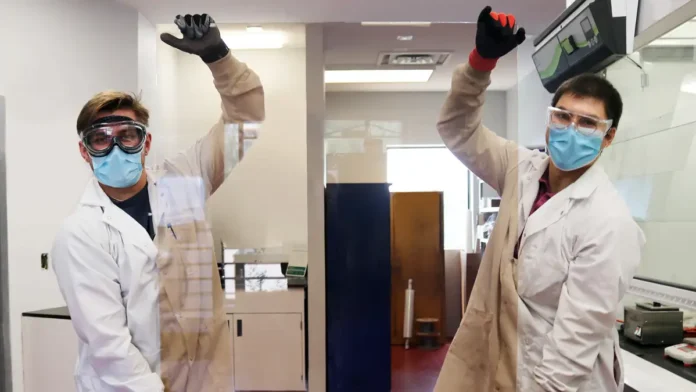A New Era for Solar-Powered Buildings
A research team from Nanjing University, China, has unveiled a transparent coating that can transform regular windows into invisible solar panels, marking a potential revolution in sustainable urban energy solutions. The development, recently published in the journal PhotoniX, introduces a clear layer made of cholesteric liquid crystal structures that redirects sunlight toward photovoltaic cells embedded at the window’s edges — without compromising clarity or color quality.
This innovation addresses the long-standing challenge of designing solar windows that are both visually appealing and energy-efficient.
How the Technology Works
Unlike earlier solar window technologies, which often caused distortions or haziness, the new Concentrating Uniform Solar Coating (CUSC) delivers 64.2% visible light transmission while maintaining 91.3% color fidelity. The coating selectively diffracts circularly polarized light, guiding it into the glass at steep angles where thin photovoltaic strips convert it into usable electricity.
Laboratory tests show that the system captured 38.1% of green light energy, which aligns with the wavelength most visible to the human eye. A small one-inch prototype successfully powered a 10-milliwatt fan under direct sunlight. Computer simulations also suggest that a standard two-meter-wide solar window could concentrate sunlight up to 50 times its normal intensity.
Cost-Effective and Scalable Manufacturing

One of the most significant advantages of this technology lies in its manufacturing process. The research team used photoalignment and polymerization techniques that are compatible with roll-to-roll production methods. This means the coating can be fabricated at scale, lowering costs and making it suitable for retrofitting existing buildings.
Dr. Dewei Zhang, co-first author of the study, explained that the coating could reduce the number of photovoltaic cells needed by as much as 75%, substantially decreasing installation expenses. Moreover, the material demonstrated long-term durability under environmental exposure, further strengthening its commercial potential.
Market Potential for Transparent Solar Technology
The launch of this technology comes at a time of rapid growth in the global building-integrated photovoltaics (BIPV) market, which was valued at around $33 billion in 2025 and is forecasted to exceed $100 billion by 2032. The specific solar window market, valued at approximately $2.5 billion, is projected to triple to nearly $7 billion by 2033.
Applications are not limited to skyscrapers and offices. The coating could also be applied to greenhouses, transparent displays, and even consumer electronics where energy harvesting through glass surfaces could become commonplace.
Solar Potential in the United States
The United States presents one of the most promising markets for this breakthrough. With an estimated five to seven billion square meters of glass surface area, the integration of transparent solar coatings could generate a massive amount of renewable power. Research from Michigan State University indicates that solar windows combined with traditional rooftop solar could potentially meet 40% of the nation’s electricity demand, and in optimal conditions, approach complete energy self-sufficiency.
Competitive Landscape in Transparent Solar
The innovation from Nanjing University enters a competitive field where several global companies are racing to dominate transparent solar technology.
-
Next Energy Technologies, based in California, recently showcased the world’s largest transparent organic photovoltaic window (101.6 cm x 152.4 cm). Their product reportedly offsets 20–25% of a commercial building’s energy load, while also reducing cooling demands by blocking infrared light.
-
Ubiquitous Energy, another U.S.-based company, is focusing on transforming high-rise buildings into “vertical solar farms” with floor-to-ceiling transparent solar installations.
Currently, most transparent solar panels achieve only 1–3% efficiency, significantly lower than traditional rooftop panels which range from 20–23% efficiency. The Nanjing coating has achieved 3.7% efficiency so far — a promising start, but still requiring further optimization.
Next Steps for the Technology
The Chinese research team acknowledges that while the results are promising, there is more work to be done. The primary goals for the next phase include:
-
Improving broadband efficiency to capture a wider range of sunlight wavelengths.
-
Enhancing polarization control for better light management.
-
Scaling up manufacturing processes for real-world commercial deployment.
If successful, the invisible solar window coating could emerge as a cornerstone of sustainable urban design, blending aesthetics with clean energy production.
Conclusion
The invisible solar window developed by Chinese scientists at Nanjing University could redefine how cities harness renewable power. By seamlessly embedding energy generation into everyday architecture, this innovation represents more than just a technological breakthrough — it symbolizes a future where clean energy is both functional and invisible.
Sources: ScienceAlert


